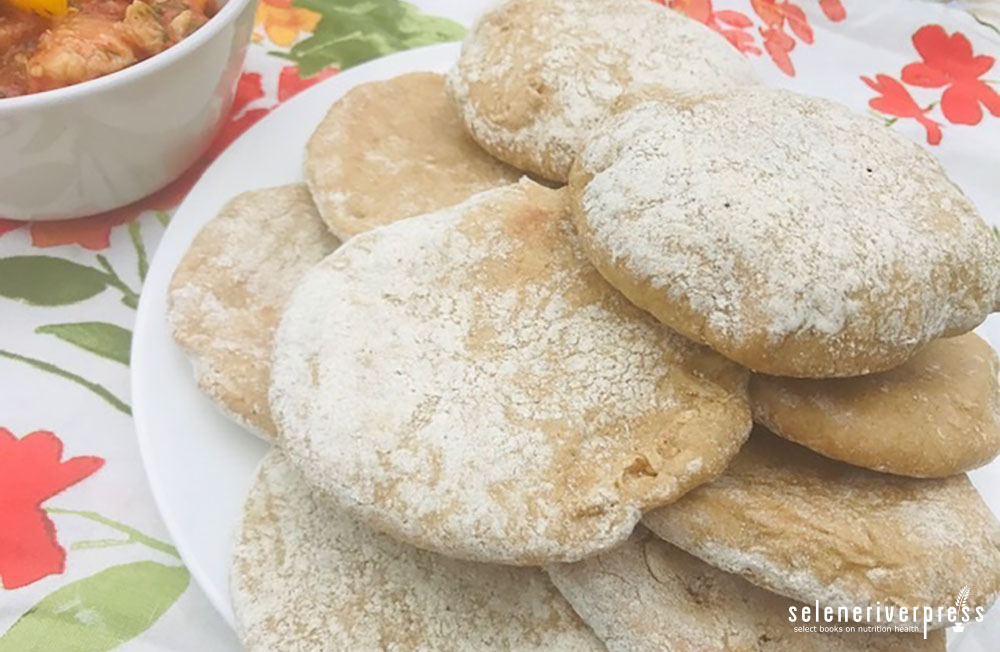Bread is the Staff of Life; so the saying goes.
It’s no secret that since the discovery of agriculture, bread has been a staple food in nations all over the world. From baguettes slathered with butter in France, to tortillas in Central America, Roti in South Asia, and dense rye breads in Scandinavian regions, each culture seems to have their own unique version of this fundamental food.
Of all the bread preparations in the world, it’s safe to say that variations of flatbread are found most commonly. Their history originally stems from the purely practical: limited cooking means in more primitive times—flatbreads are easy to prepare and cook quickly over an open fire (unlike larger loaves that emerged in later eras), and they are compact and easy to transport. Furthermore, flatbreads also acted as a utensil, to scoop food into hungry mouths. And though the history of flatbreads goes back thousands of years, these functional motivations still apply today.
Forget sliced bread’s reputation as “The Greatest Thing”; flatbreads are really where it’s at.
Since I’ve been on a bit of a Middle Eastern/Mediterranean kick lately, exploring the bold spices and flavorful dishes from these regions, it only seemed fitting to present a recipe for what is possibly the most quintessential part of any meal of the region: pita, their regional contribution to the world’s vast assortment of different flatbreads.
The history of pita bread dates back some 4000 years, but its exact regional origination is not completely clear. Its popularity spread quickly along trade routes through the desert regions and up the Mediterranean, through the Ottoman and Hellenistic empires, morphing as it traveled. Each region found its own unique, yet remarkably similar, adaptation.
The traditional pocket-style pita, like this recipe, was achieved solely through steam, by cooking at incredibly high temperatures—upwards of 800°F. Since most home ovens do not venture past 550°F, some even lower, we’ve replicated the hot oven using a pizza stone, which retains heat and simulates the hot stone oven of the original pita recipes.
I was pleased to discover that whole einkorn flour produced an airy, light pita, about as close to refined all-purpose flour as one could get.
There were a couple tricks to achieve the best puff. Unlike pancakes, where the first one is always the worst, the first batch of pitas I baked puffed faster and significantly more than subsequent batches. The second and third batch (slightly warmer from sitting at room temperature) took a little longer to puff, and the air pockets didn’t get quite as large. I was equally pleased with the taste and texture of the later batches; but they reminded me more of fluffy, bread-like pitas we get here in North America at most Greek restaurants. So, if you refrigerate your pita dough rounds while earlier batches are baking, you’ll end up with the best pocket. For a fluffier pita with less pocket, let sit at room temperature.
Additionally, I cannot stress enough the importance of liberal amounts of flour to dust both sides of the pita dough as it rests. They start to stick very quickly, and when they stick, they become misshapen and don’t puff properly.
Once the baking process has started, these come along very quickly, each batch taking less than a few minutes. Since you have to open the oven to pull the pitas out as they bake, for best results, bring the oven back up to temperature before baking the next batch.
Serve these stuffed with your choice of filling, or as a side-dish (and utensil) for a more substantial meal, or as part of a meze spread of dips and small-bite dishes.
Einkorn Pita
Makes 12 – 6-inch pitas
Prep time: 15 minutes, plus resting time
Cook time: 5 minutes per batch
Special equipment needed: pizza stone, parchment paper
Ingredients
3 cups whole grain einkorn flour, plus additional flour, if necessary
1½ teaspoons sea salt
2¼ teaspoons yeast
1 tablespoon honey
1 cup water
Additional einkorn flour for dusting
Oil for greasing bowl
Method
- Combine all ingredients in the bowl of a stand mixer. If you don’t have one, the dough can easily be kneaded by hand. Mix on low speed until dough forms a ball, then knead until stretchy and smooth, about 5 minutes. Dough will be slightly sticky but not wet. Add additional flour in ¼-cup increments until dough comes together. Knead into a tight ball and place in an oiled bowl. Cover with a towel or plastic wrap and let rest at room temperature for 30-45 minutes.
- Place a pizza stone on the center rack of the oven and preheat to 500°F.
- Dust counter with plenty of flour, then turn dough out onto the counter. Cut into 12 equal golf-ball-sized pieces and roll each into a ball. Rest for 5 minutes.
- Line 2 or 3 baking sheets with parchment paper and dust liberally with flour. Roll each ball out into a circle about 1/8 – 1/4-inch-thick and place on the prepared pans, leaving room between the pita rounds. Dust tops with lots of flour.
- Remove pizza stone from oven and place pita rounds, about 4-6 at a time, on stone. Immediately flip each pita over on the hot stone, then return stone to oven. Refrigerate remaining pita dough rounds while the first batch bakes.
- Bake pitas for 3 minutes. Open oven and, using gloved hands for the heat, flip each pita over. Bake a further 1 minute until puffed and just beginning to get golden-brown.
- Transfer pita to a cooling rack. Return stone to oven and let temperature come back up to 500°F. Continue baking remaining pitas in batches, as necessary.
- Then store in an air-tight container.
Image from Briana Goodall.



